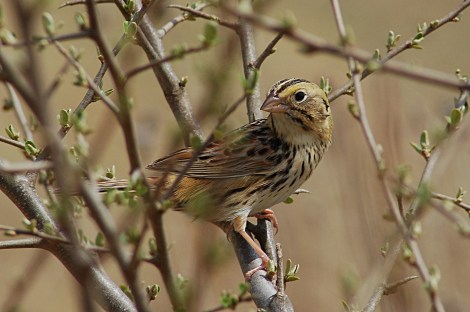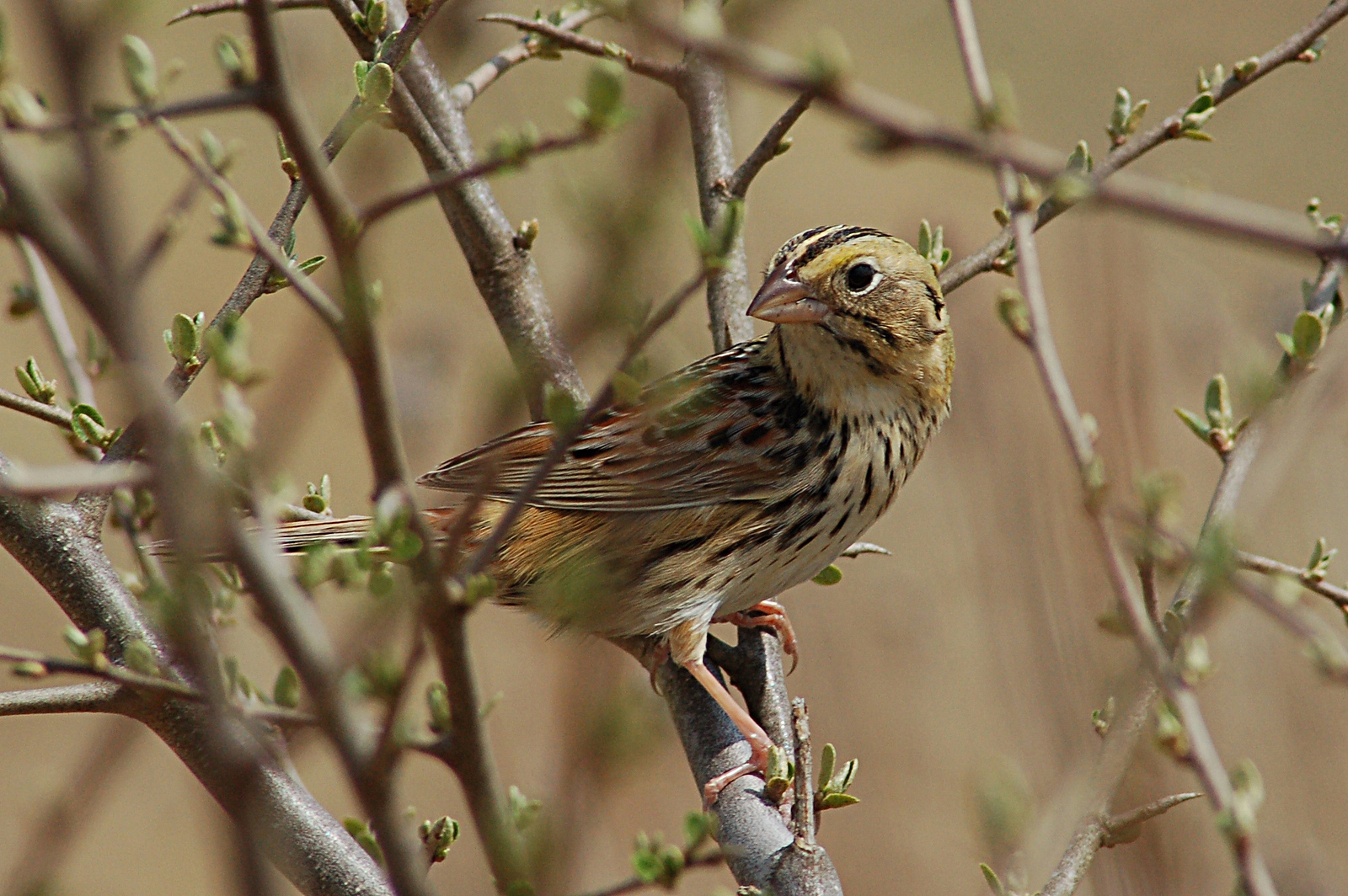
Don HeniseHenslow’s sparrow: another special interest group asking for a government handout.
With the farm bill in flux, it’s looking more and more likely that the environment will take a hit. The Conservation Reserve Program, which recently accounted for 7 percent of farm bill funding, essentially pays farmers to produce wildlife, instead of producing crops. Since there’s no market that rewards farmers for preserving biodiversity, or enriching the world with birdsong, it’s the sort of thing that government is uniquely equipped to do.
The Conservation Reserve Program has made a big difference in the lives of tiny birds. Take the Henslow’s sparrow for instance: Populations declined precipitously between the 1960s and 1985, when suburbs sprawled into and farmers plowed more of the grassland habitat they require. But since the beginning of the program in 1985, the number of Henslow’s sparrows (surveyed in Illinois) has increased by a factor of 25.
That’s a success story, but a fragile one. The most recent State of the Birds report, put out by the Cornell Lab of Ornithology, stresses the importance of the farm bill in maintaining this progress, and points out an unfortunate trend.
Congressional appropriators have cut conservation programs disproportionately relative to other Farm Bill programs. Nearly 80 percent of all the cuts appropriators made to the Farm Bill since 2007 have targeted the conservation programs, reducing Farm Bill conservation by more than $3 billion over the past five years. Additionally, sequestration has reduced baseline funding for Farm Bill conservation programs by approximately $2 billion, and Senate and House Farm Bills propose to cut an additional $3.5 billion to $5 billion over ten years. Minimizing cuts to conservation on private working landscapes is critical for our nation’s bird and wildlife populations, as well as for our air and water quality.
The program is more important than ever because rising crop prices are once again tempting farmers to plow up habitat. Farmers have converted some 23 million acres of grasslands, bushes, and wetlands into crops between 2008 and 2011. Montana and the Dakotas host a region filled with ephemeral ponds, known as prairie potholes; this area is the most important breeding ground for waterfowl in the U.S. But since 2007, 22 percent of the prairie pothole region conservation reserves have reverted to agricultural production.
The conservationist Aldo Leopold wrote, “All the regulations in the world will not save our game unless the farmer sees fit to leave his land in a habitable condition for game.” Many farmers take genuine pride in the home they provide to wildlife. But they can’t be expected to bear the costs of this stewardship entirely on their own — and in the end, the birds will pay most of all.



